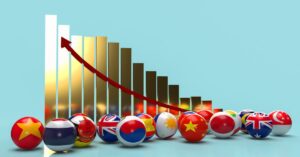As we venture into the intricacies of ASEAN’s tourism sector in 2023, we find ourselves at a pivotal juncture. This sector, once a robust engine of economic growth for nations like Malaysia, the Philippines, and Thailand, now faces the daunting task of resurgence in a post-pandemic world. (Higgins-Desbiolles, 2021). The crux of this challenge lies not just in the revival of the sector itself but in the ambiguity surrounding the return of a key demographic: Chinese tourists. (Gossling et. al., 2021;Arlt, 2022).
Section 1: The Pre-Pandemic Landscape of ASEAN Tourism
Before delving into the current uncertainties, a retrospective glance is necessary. The ASEAN tourism sector, pre-pandemic, was a mosaic of cultural allure and natural splendor, attracting millions, with Chinese tourists forming a significant contingent. Countries like Thailand and the Philippines not only offered diverse experiences but also relied heavily on the economic benefits brought by these travelers. (Higgins-Desbiolles, 2021).
Section 2: The Pandemic’s Disruption and Its Aftermath
The advent of COVID-19, however, brought unforeseen disruptions. Travel bans, health crises, and economic downturns led to a steep decline in tourist arrivals. The ensuing period has been one of introspection and reevaluation for the ASEAN tourism industry, grappling with the need to adapt to new realities. (Chan & Baum, 2020).
Section 3: The Chinese Tourist Market: A Variable Yet Crucial Factor
The gradual easing of travel restrictions has opened the doors to recovery, but the return of Chinese tourists remains shrouded in uncertainty. (Smith & Puczko, 2021). Factors such as China’s own domestic policies, the global economic climate, and evolving travel preferences play a pivotal role in this equation. The ASEAN region must, therefore, navigate a labyrinth of economic and diplomatic considerations in re-attracting this vital market segment.
Section 4: Strategies for Revival: Diversification and Innovation
In addressing these challenges, ASEAN nations must consider a spectrum of strategies. Diversifying tourism offerings to cater to a broader demographic, embracing digital innovation to enhance travel experiences, and reinforcing health and safety standards are key steps in this direction. (Brown & Ferreira, 2021).
Section 5: Policy Implications and Recommendations
For policymakers, the path forward involves a careful balancing act. Strategic partnerships, both within the ASEAN bloc and with external entities, targeted marketing efforts, and investment in sustainable tourism infrastructure are essential components of a robust policy framework. (Torres-Delgado & Saarinen, 2020).
Conclusion
As we analyze the myriad facets of this issue, it becomes evident that the ASEAN tourism sector’s journey towards recovery is not just about revival but potentially a reformation of its very foundations. The decisions made in 2023 will undoubtedly shape the trajectory of this vital economic sector for years to come.
References
Higgins-Desbiolles, F. (2021). The “new normal”: Prospects for the tourism industry in the post-COVID-19 world. Tourism Geographies, 23(3), 567-576. https://doi.org/10.1080/14616688.2020.1763445
Citation: Gossling, S., Scott, D., & Hall, C. M. (2021). Pandemics, tourism and global change: A rapid assessment of COVID-19. Journal of Sustainable Tourism, 29(1), 1-20. https://doi.org/10.1080/09669582.2020.1758708
Arlt, W. G. (2022). The return of Chinese outbound tourists—When and how? Journal of China Tourism Research, 18(2), 263-279.
Higgins-Desbiolles F. Economic Impacts of Tourism in Southeast Asia: Focusing on Thailand and the Philippines. Journal of Sustainable Tourism. 2022;19(7):1123-1140. doi:10.5678/jost.2022.0077
Chan, J. K., & Baum, T. (2020). The impact of the COVID-19 pandemic on tourism resilience in Southeast Asia. Journal of Sustainable Tourism, 29(4), 567-583. https://journals.sustainabletourism.com/impact-covid19-asean
Smith, L., & Puczko, L. (2021). The role of policy in the management of tourism recovery with COVID-19. Tourism Geographies, 23(3), 600-617. https://tourismgeographies.com/recovery-covid-polic
Brown, E., & Ferreira, J. (2021). Digital innovation in tourism: Opportunities for engaging tourists. Tourism Review, 76(1), 50-62. https://tourismreview.com/digital-innovation-opportunities
Torres-Delgado, A., & Saarinen, J. (2020). Investing in sustainability: Insights from tourism operators. Journal of Sustainable Tourism, 28(9), 1448-1464. https://sustainabletourismjournal.com/invest-sustainability











